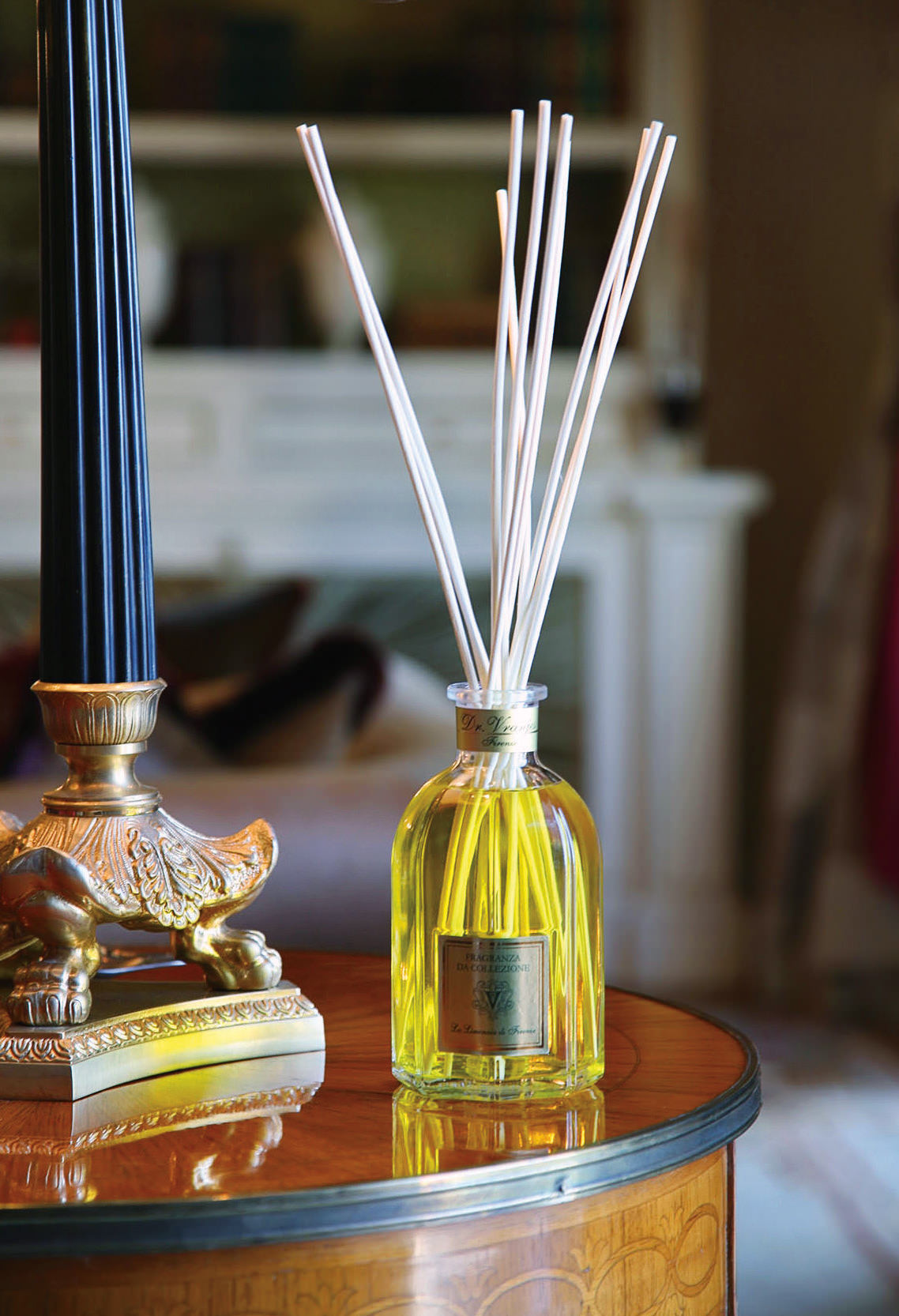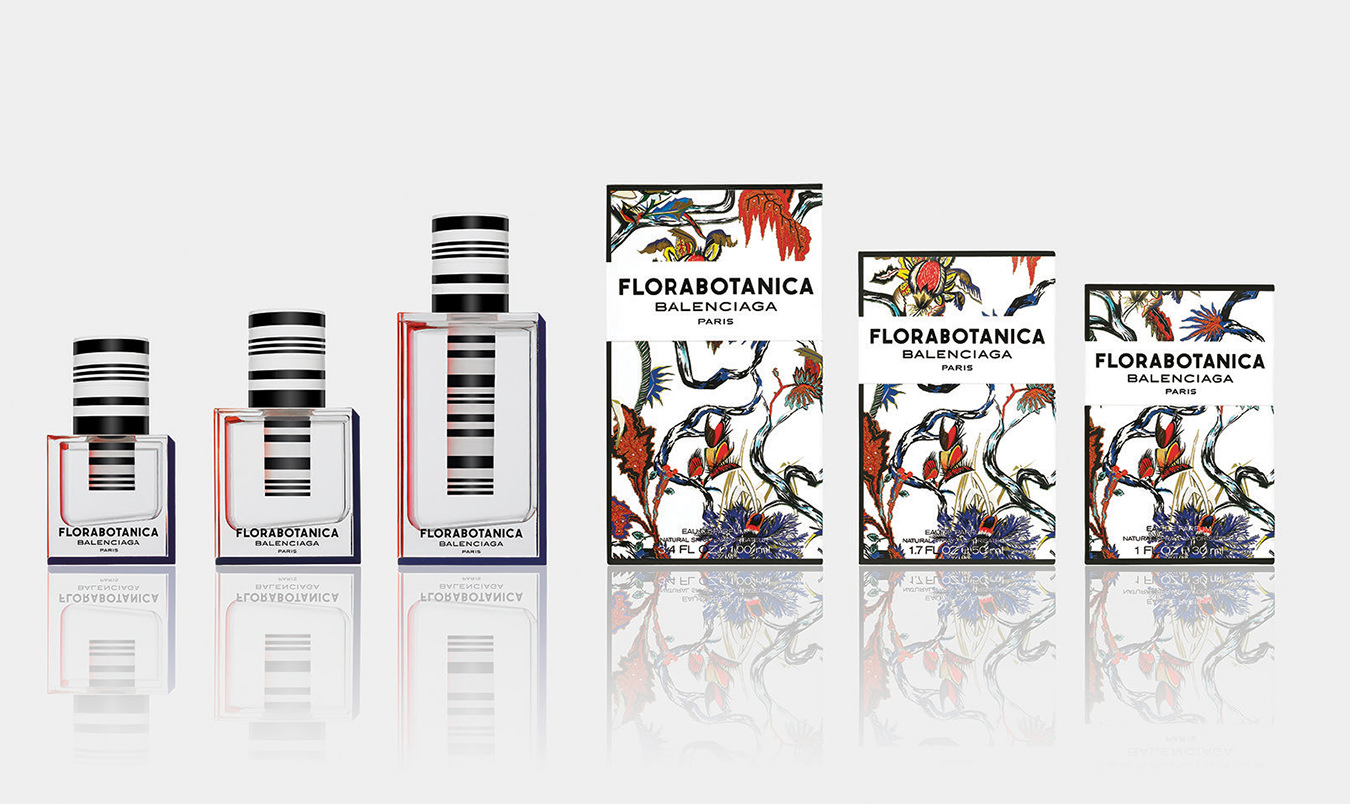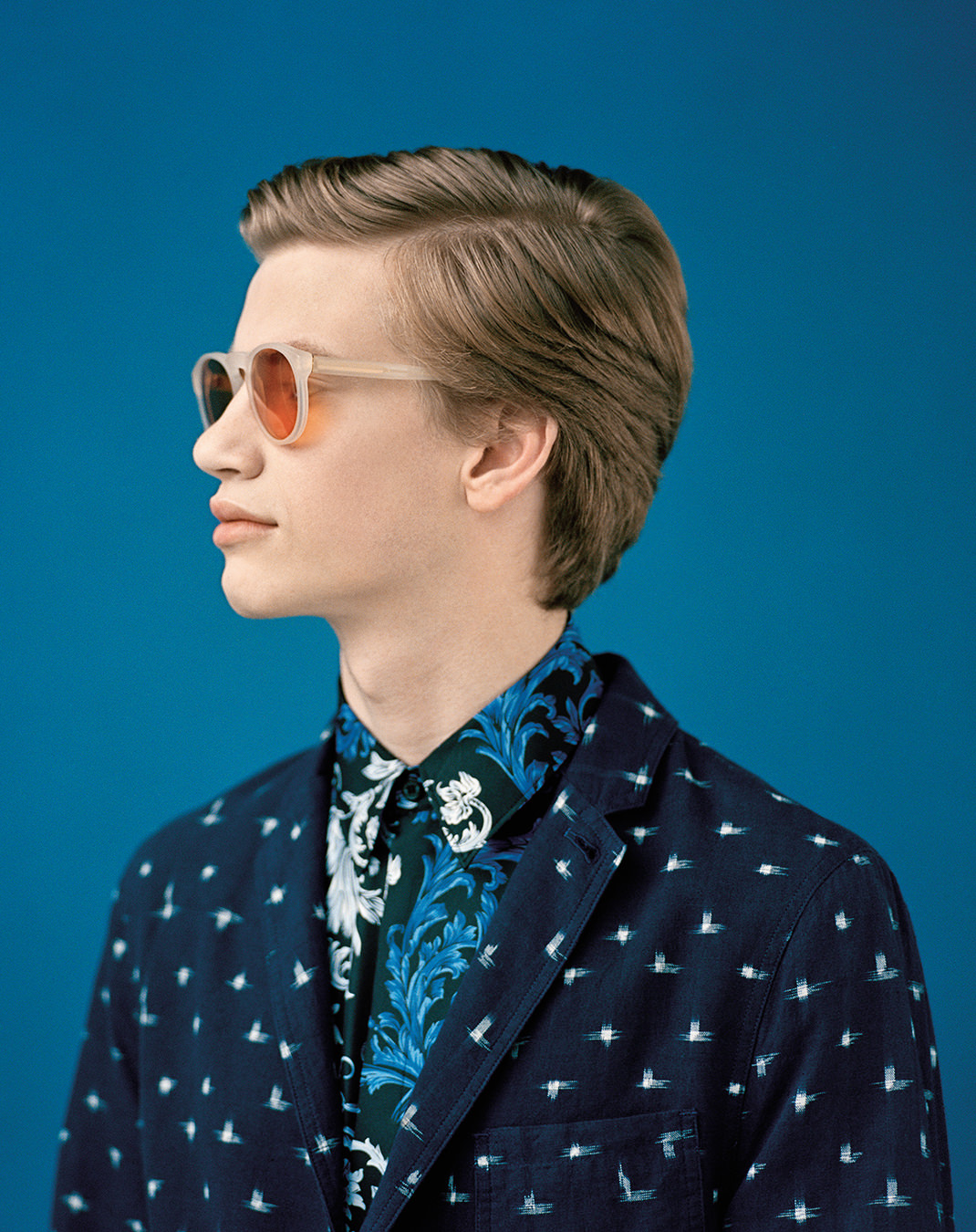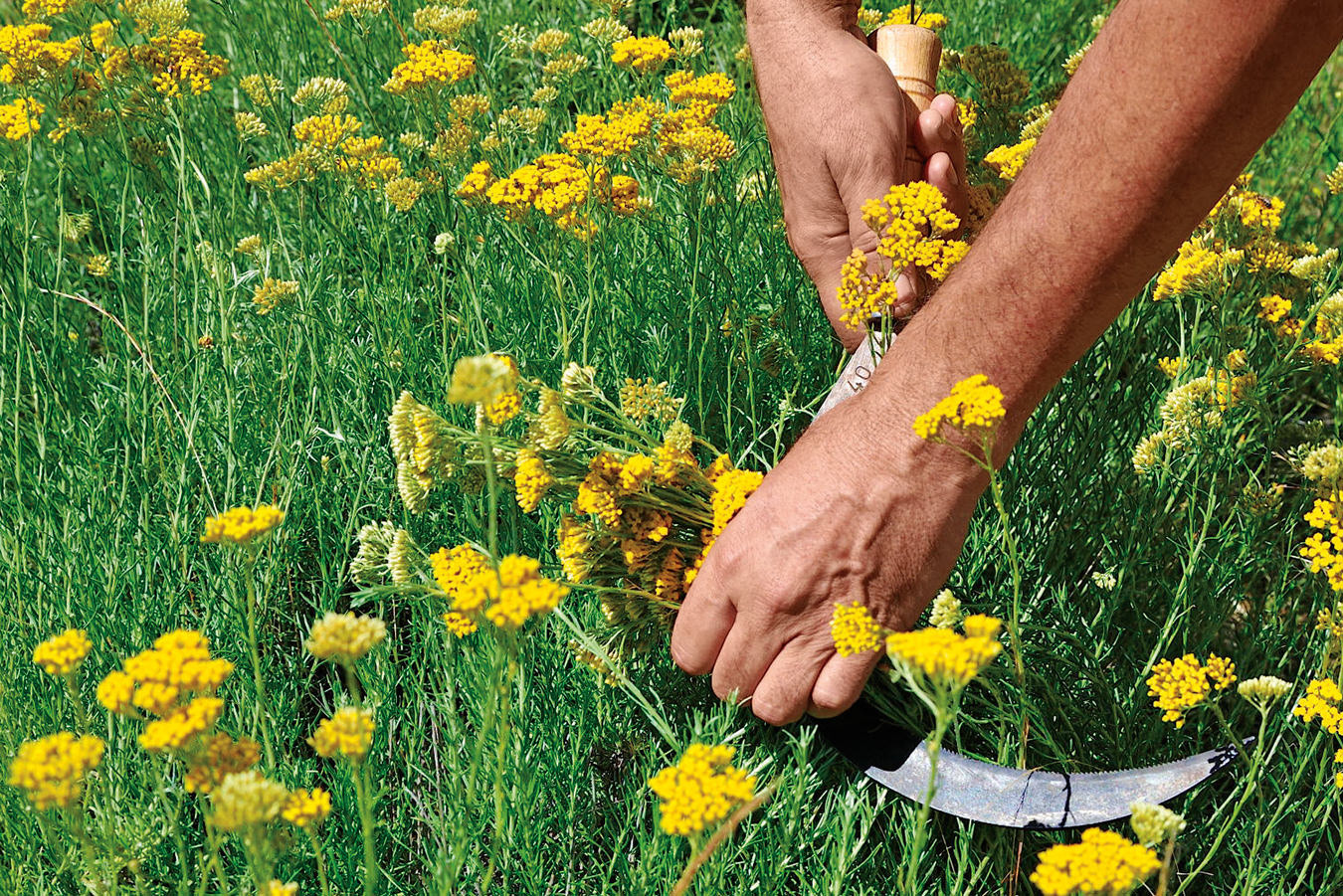-
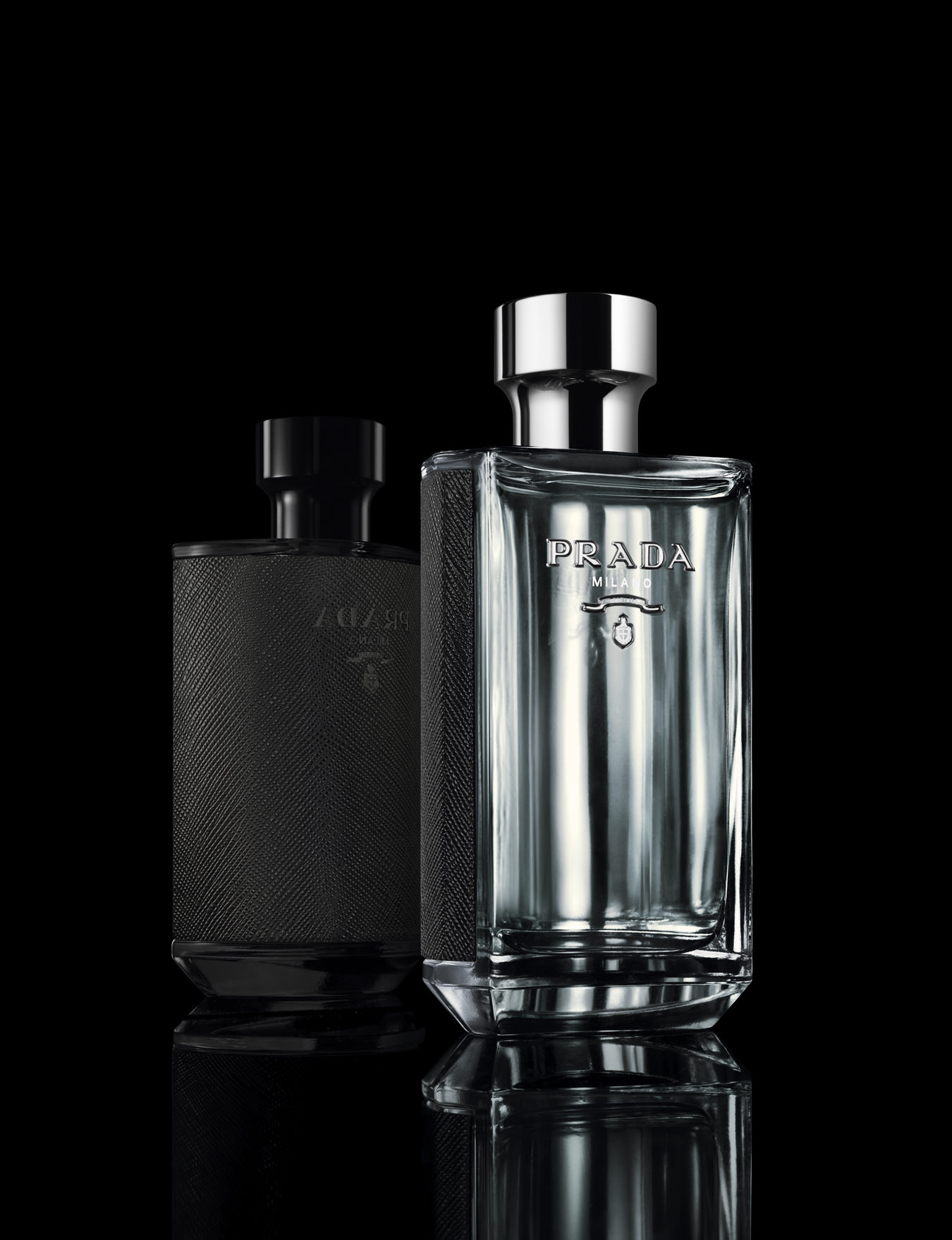
L’Homme Prada.
-
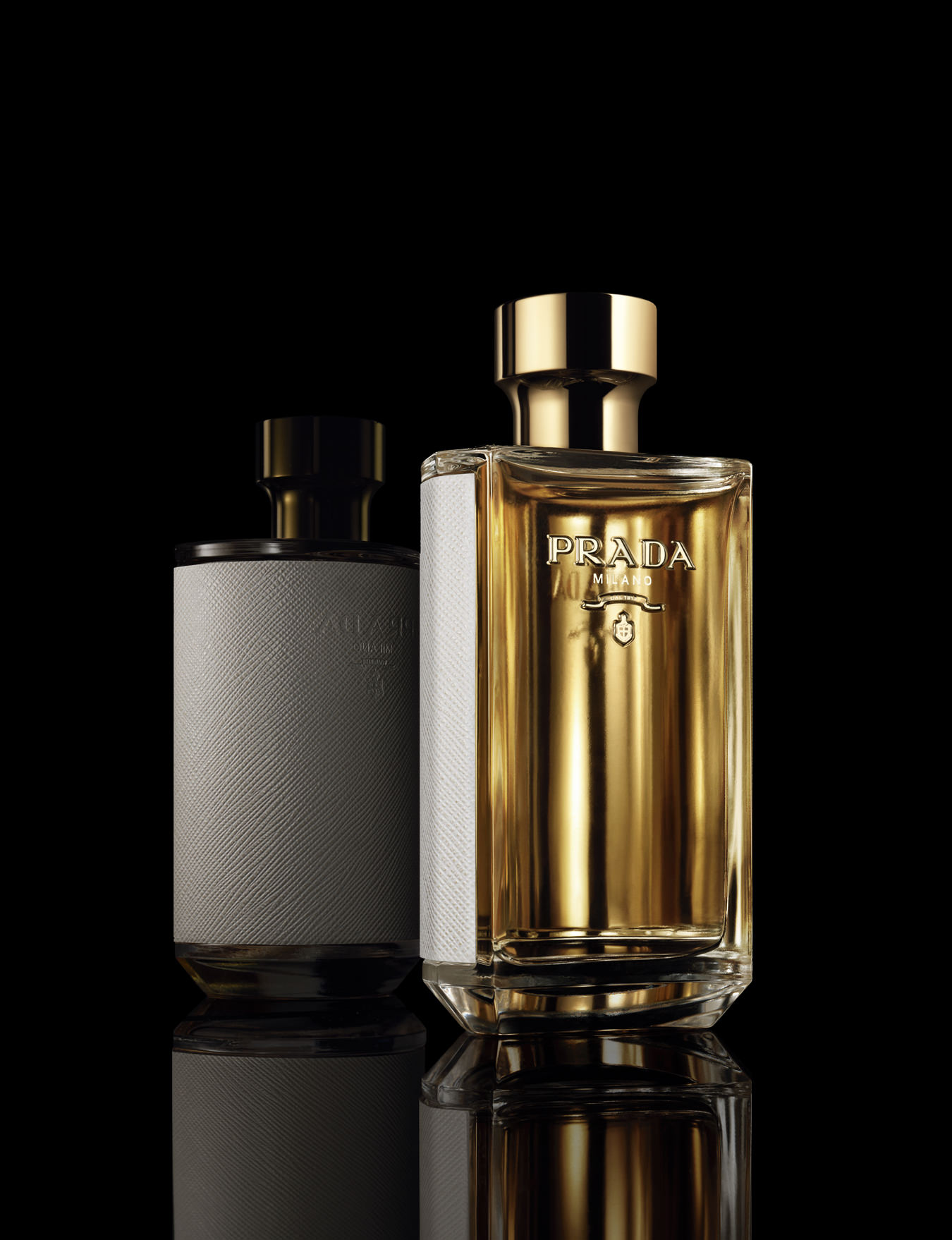
La Femme Prada.
-
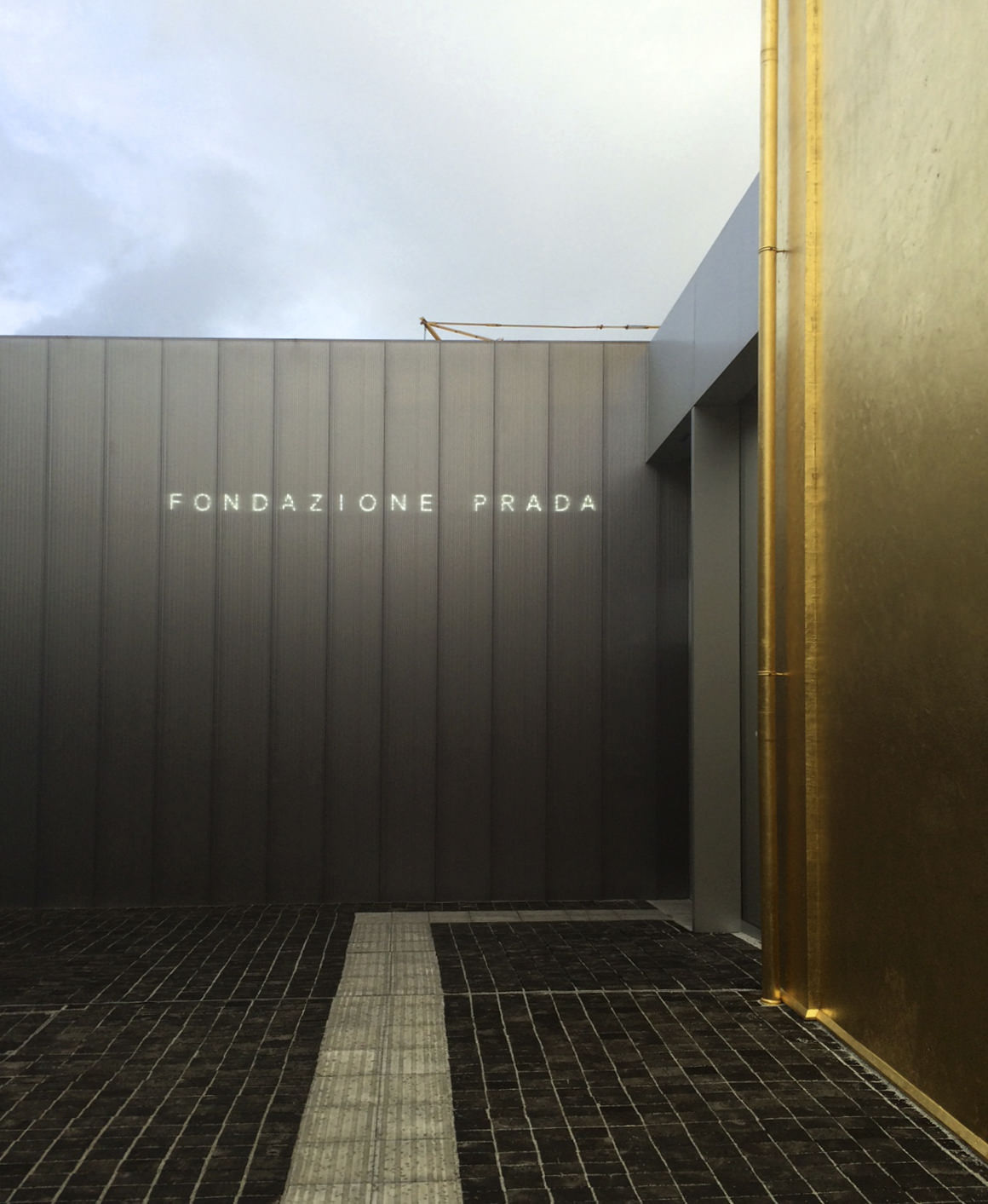
La Fondazione Prada in Milan is dedicated to contemporary art and culture.
L’Homme Prada and La Femme Prada
A fragrance journey.
Launching a fragrance is a potentially lucrative yet risky move. How do you avoid accusations of selling out? If you’re Prada, you go to Daniela Andrier. A perfumer working at fragrance giant Givaudan, she is the highly respected nose behind many contemporary fragrances on the market. For Prada, Andrier has become the unofficial house perfumer, creating 28 fragrances to date.
When Andrier was a child, she would sneak into her mother’s bathroom and make concoctions from the perfumes that lay inside. “I was obsessed by fragrance,” she explains, “but I thought that was normal, that everyone was that way.” Born in Heidelberg, Germany, Andrier studied philosophy at the Sorbonne in Paris, but once she found out that making perfumes was actually a profession, she joined the ranks. Andrier began as a trainee at Chanel. The following year, she enrolled at Givaudan’s École de Parfumerie. She has created perfumes for Bottega Veneta and Maison Margiela, reformulated Yves Saint Laurent’s Rive Gauche and Gucci, but perhaps most significant to her career has been her relationship with Prada.
“I am the translator that understands the language of Prada and renders that into a fragrance,” says the 52-year-old perfumer at the fragrance launch in Milan. Her nuanced cognizance of the fashion house codes, of its inclination toward contradiction, and its abundant array of references means that she manages to bottle Prada’s core components in an assortment of variations. Prada’s latest fragrance offerings, L’Homme Prada and La Femme Prada (produced under licence by Spanish perfume giant Puig), are a his-and-hers complement, yet also question the notion of gender.
For L’Homme Prada, Andrier has adapted the classic men’s fougère style of perfume, which includes neroli, geranium, and patchouli, and two ingredients more often associated with feminine perfumery: iris and amber. La Femme Prada, for its part, revels in its femininity. Structured around the fresh yet sensuous scent of frangipani, with touches of tuberose, vanilla, beeswax, and ylang-ylang, it offers a contrast to L’Homme, but Andrier has cleverly introduced a shadow note from men’s perfumery: vetiver, which gives La Femme a dry but lasting finish.
For Prada, Andrier has become the unofficial house perfumer, creating 28 fragrances to date.
“Prada fragrances have never been a cliché of the smell of a woman or the cliché of the smell of a man,” says Andrier. “If you look at the cliché right now, a woman needs to smell of patchouli with caramel, and men, they have to smell of vanilla—that is where the trends are. [Trends are] something that Miuccia [Prada, the company’s lead designer] really fights in everything she is doing. She is not like everyone. I could not translate her universe by putting the things [ingredients] as preferred by industry flavour marketers.”
Mrs. Prada, as she is known, who stands about five foot five inches, usually gives little away. Some designers are seekers of trends, but Prada actually is the trend, season after season, leaving others spinning at her heels as she unfolds her singular vision of what a woman and a man can be. Mrs. Prada is a curious capitalist philosopher with a brilliant instinct for modern desire. She does what she likes, and she does it with dedication. She makes what she wants to make.
“[Miuccia] believes in individuality,” says Andrier, commenting on the gender fluidity of the new fragrance duo. She could be him, he could be her. “The fragrances are not unisex. I believe that any beautiful fragrance can be worn by a man or a woman—they are not gender related. What does it mean, gender related? It’s a cultural behaviour.”
Andrier considers herself a contrarian when it comes to trends. “I don’t want to be a part of the chaos right now in fragrances,” she explains. “I am very opposed to what’s going on in large ways in the industry. Too many things resemble each other. We all deserve to get moved by fragrances.”
This is the company’s biggest fragrance launch to date. In honour of La Femme Prada and L’Homme Prada, Miuccia and her husband, Patrizio Bertelli, Prada’s chief executive, invited 300 of their closest friends to a private dinner held at the couple’s art-filled campus on Milan’s perimeter. Guests milled about the sprawling Fondazione Prada on a Sunday night, in Bar Luce, a café designed by Wes Anderson, faces of the new fragrances, actors Mia Goth and Ansel Elgort, chatted as young things do at one retro Formica table.
The new Rem Koolhaas−designed Fondazione Prada is located in a former distillery dating back to the 1910s and is composed of 10 buildings (seven restored and three purpose-built) filled with a selection of contemporary and modern art sprawling across 205,000 square feet. Visually, the Fondazione Prada is an intriguing hodgepodge of buildings, styles, creative themes, and time periods. Shiny-mirrored surfaces are juxtaposed with concrete; 24-karat gold leaf covers parts of the exterior. Perhaps the most exciting element of the Fondazione is Bar Luce. Being inside it is a bit like being on the set of one of Anderson’s films; the bar, where patterned wallpaper mimics the architectural flourishes of the city’s Galleria Vittorio Emanuele II, effectively emulates the throwback perfection for which the moviemaker is known.
“I am the translator that understands the language of Prada and renders that into a fragrance,”says Daniela Andrier.
“Fragrance is an occasion to put an accent on feelings, irrationality, instinct, and creativity,” noted Miuccia at the launch, the only comments from the fashion empire doyenne about La Femme Prada and L’Homme Prada.
The overcrowded fragrance market tends to rely on targeting a specific customer rather than creating anything remarkable. Companies aim their products squarely at various stereotypes—the intelligent working woman, the seductress, the action hero, the jock—with brands turning out green fragrances, oriental fragrances, fruity fragrances, floral fragrances. Miuccia was intent on resisting such a reductive viewpoint, and she encouraged Andrier to take the same approach with her work.
“I look at the brand that I work for and try to make things that really are owned by them and their DNA,” says Andrier of her task. “I am very conscious that the beautiful fragrances I have created for Prada I could not have done without the platform. I am inspired by her [Miuccia’s] vision and their world.” When selecting a scent, “Don’t be influenced by the image it portrays,” Andrier emphasizes. “You should feel the emotion it evokes. Creating a fragrance involves equations and formulas, but at its heart it’s an emotional process evoking all sorts of things.”
Andrier says her sense of smell is no more acute than anyone else’s. “We all have noses, but some are very sensitive to smell, and their way of communicating to the world is through fragrances. My perception of the outside world and of emotions is very much alive through smell.” What is her favourite smell on earth? Andrier pauses before responding. “Life. There would not be one specific smell, but yes, everything that reminds us of life. Whatever is alive is often really beautiful.”

